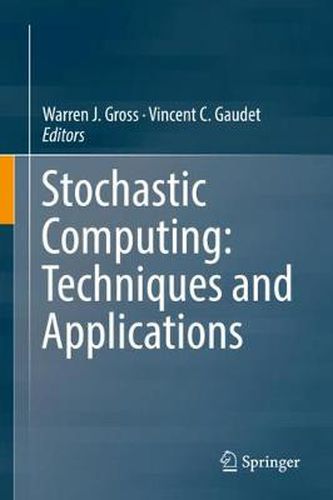Readings Newsletter
Become a Readings Member to make your shopping experience even easier.
Sign in or sign up for free!
You’re not far away from qualifying for FREE standard shipping within Australia
You’ve qualified for FREE standard shipping within Australia
The cart is loading…






This title is printed to order. This book may have been self-published. If so, we cannot guarantee the quality of the content. In the main most books will have gone through the editing process however some may not. We therefore suggest that you be aware of this before ordering this book. If in doubt check either the author or publisher’s details as we are unable to accept any returns unless they are faulty. Please contact us if you have any questions.
This book covers the history and recent developments of stochastic computing. Stochastic computing (SC) was first introduced in the 1960s for logic circuit design, but its origin can be traced back to von Neumann’s work on probabilistic logic. In SC, real numbers are encoded by random binary bit streams, and information is carried on the statistics of the binary streams. SC offers advantages such as hardware simplicity and fault tolerance. Its promise in data processing has been shown in applications including neural computation, decoding of error-correcting codes, image processing, spectral transforms and reliability analysis.
There are three main parts to this book. The first part, comprising Chapters 1 and 2, provides a history of the technical developments in stochastic computing and a tutorial overview of the field for both novice and seasoned stochastic computing researchers. In the second part, comprising Chapters 3 to 8, we review both well-established and emerging design approaches for stochastic computing systems, with a focus on accuracy, correlation, sequence generation, and synthesis. The last part, comprising Chapters 9 and 10, provides insights into applications in machine learning and error-control coding.
$9.00 standard shipping within Australia
FREE standard shipping within Australia for orders over $100.00
Express & International shipping calculated at checkout
This title is printed to order. This book may have been self-published. If so, we cannot guarantee the quality of the content. In the main most books will have gone through the editing process however some may not. We therefore suggest that you be aware of this before ordering this book. If in doubt check either the author or publisher’s details as we are unable to accept any returns unless they are faulty. Please contact us if you have any questions.
This book covers the history and recent developments of stochastic computing. Stochastic computing (SC) was first introduced in the 1960s for logic circuit design, but its origin can be traced back to von Neumann’s work on probabilistic logic. In SC, real numbers are encoded by random binary bit streams, and information is carried on the statistics of the binary streams. SC offers advantages such as hardware simplicity and fault tolerance. Its promise in data processing has been shown in applications including neural computation, decoding of error-correcting codes, image processing, spectral transforms and reliability analysis.
There are three main parts to this book. The first part, comprising Chapters 1 and 2, provides a history of the technical developments in stochastic computing and a tutorial overview of the field for both novice and seasoned stochastic computing researchers. In the second part, comprising Chapters 3 to 8, we review both well-established and emerging design approaches for stochastic computing systems, with a focus on accuracy, correlation, sequence generation, and synthesis. The last part, comprising Chapters 9 and 10, provides insights into applications in machine learning and error-control coding.